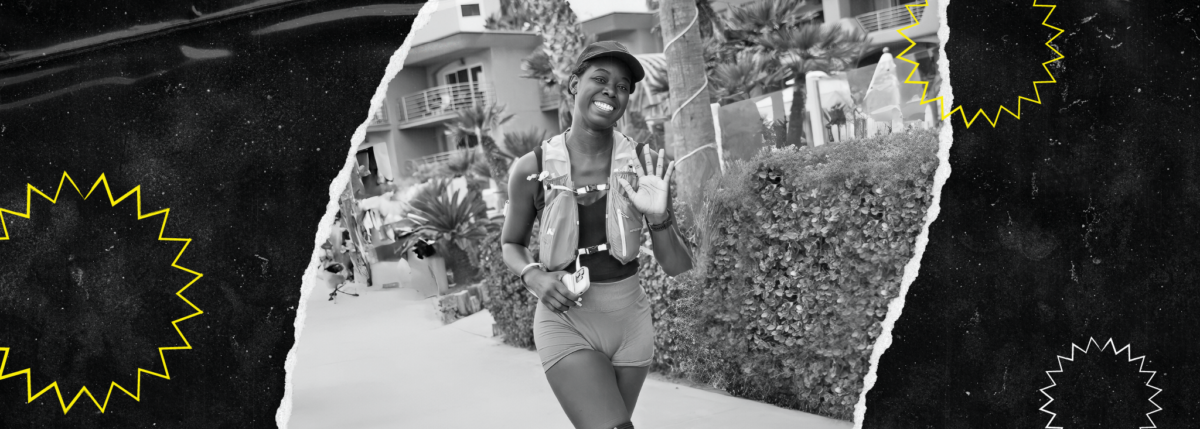My First Freestyle Libre: Making Adjustments to Type 2 Diabetes Care
Written by: T'ara Smith, MS, Nutrition Education
4 minute read
July 28, 2021
John Ramos shares how he obtained his first Freestyle Libre on Medicare and made changes to his T2D, such as learning how to calculate carb ratios.
When you speak with John Ramos, you hear a person who is self-assured about what methods of diabetes care and self-management work for him, and which ones simply don’t. John, who’s been living with type 2 diabetes (T2D) for over 15 years and is a member of the Beyond Type 2 community, shares his story with type 2 diabetes, his experiences with trying different kinds of medications, and how his introduction to the Freestyle Libre 14 day system has helped him manage diabetes more effectively.
BT2: Hi, John! Thank you for joining us. When were you diagnosed with type 2 diabetes?
John: I was diagnosed probably right around 2004 or 2005 with type 2 diabetes. My A1C was probably right around 11, so it was very high. I was, of course, given the normal metformin and the general advice of “you just need to eat better” by the doctor. That worked for a while and my A1C was getting better and went down to about 8 or maybe the high 7s. During all of those years, I went into denial. I was still taking my meds, but just didn’t diet and ended up gaining weight, which made things worse for me.
How did your experiences lead you to obtain a Freestyle Libre? Did you research continuous glucose monitor (CGM) technology yourself?
I was researching it and thought I wanted the Dexcom simply because I was having severe lows, but my insurance wouldn’t cover it because they said I wasn’t a type 1. Fortunately, I was able to get the Freestyle Libre 14 day system. I like that I get my data directly to my phone.
Through all of that denial, my A1C was going up and down like a yo-yo. It would go up and down but stay right around the nines. I later started having severe reactions to metformin and had an issue with pancreatitis. My doctor switched me to Victoza, but that didn’t work so well. So, I was introduced to insulin in 2008. I’ve used mixed insulins such as 75/30, 70/20, and 75/25 mixes, NPH and Humulin R. I’ve also used analog insulin but they’ve gotten too expensive, so I went back to regular insulin.
When the pandemic started, diabetes got a little harder to manage. My diabetes nurse suggested I start Humulin R U-500 insulin, which required me to get approved for medical financial assistance for low-income individuals. Sometime last year, I started on Jardiance, which didn’t do much for my A1C, even with insulin. Then, I moved back to Victoza, which made a difference in lowering my blood sugar. I was making a lot of progress and later had to be taken off U-500 insulin because I was having severe lows and needed to check my blood sugar anywhere between 15 to 20 times a day. I’m disabled and on Medicare, so I asked if I’d be able to get a CGM and qualified because I was injecting insulin and checking my blood glucose more than several times per day. This allowed me to get the Freestyle Libre.
What were some of the first things that you noticed after you started wearing your Freestyle Libre? What changes did you make after wearing it?
After wearing it for the first few weeks my blood glucose levels were significantly dropping. I was still having those severe lows now and then, especially around dawn, with the lowest blood sugars dipping into the 2.8-3.3 mmol/L50-59.4 mg/dL. I had to eat late at night sometimes to keep it up. But, I could see when my blood glucose would start rising before I woke up, which is just the kidneys releasing glucagon. It’s been a cool learning experience. I’d have to give credit to people on YouTube who shared their experiences. Those videos helped me learn how to adjust to highs and lows, including tweaking my insulin, learning about my insulin sensitivity factor, and learning how to calculate my carb ratios. I could see my blood sugar drop a lot sooner than I thought after a meal with those calculations. I thought it would take about four hours to see any effects on my blood glucose, but it turned out to be an hour-and-a-half to two hours. The other great part is being able to see my readings in the LibreLink App and on LibreView on the web.
What foods did you learn had a big impact on your blood sugar? Were there any surprises there when it came to learning about food in your diabetes journey?
Not in general, for example, I knew some of the big things like frappuccinos would set me off. But I learned my blood glucose levels vary with some other things like pizza, something I have about once a month, depending on where I get it. It’s all about calculating my dosages correctly and remembering that fat makes carbs digest slower, so I have to time my doses well, too. For example, I had ice cream and calculated enough carbs for that, and my blood glucose was fine; it rose a bit but came right back down. A friend of mine had me bake a German chocolate cake and the icing has egg, sugar, condensed milk coconut and pecans—all of which are delicious. But still, I have to take into account the actual cake, the icing, and their carbs and fat content when taking insulin.
What results have you seen in terms of your A1C and overall blood glucose since you’ve been wearing the Freestyle Libre?
My A1C was right around 9.7 in probably around February of 2020. By August, I think it was just before I started the Libre it was down to like a 7.4, most likely due to the severe lows. When I started wearing the Libre in November, it was around 6.0, when I was still having lows. This past April, it was around 6.3. It’s a bit higher because I’ve learned to address my low blood sugars.
Why is CGM an important tool for people with type 2 diabetes to have access to?
It’s a big eye-opener on you can see what food you eat each day and how high your blood glucose is going to reach. You’ll be much more informed to make changes to portion sizes and medications if you need to. Let’s say you had a large portion of rice or potatoes, the Libre can help you learn how much will work for you and your blood glucose. It’s a safe and virtually painless tool to have.
This content was made possible with support from Abbott, the makers of FreeStyle Libre 2, a Founding Partner of Beyond Type 2.

Author
T'ara Smith, MS, Nutrition Education
T’ara was diagnosed with type 2 diabetes in July 2017 at the age of 25. Since her diagnosis, she focused her academic studies and career on diabetes awareness and living a full life with it. She’s excited to have joined the Beyond Type 1 team to continue her work. Two years later, T'ara discovered she'd been misdiagnosed with type 2 and actually has latent autoimmune diabetes in adults (LADA). Outside the office, T’ara enjoys going to the movies, visiting parks with her dog, listening to BTS and cooking awesome healthy meals. T’ara holds an MS in Nutrition Education from American University.
Related Resources

Jordan Sooter’s journey to running marathons began in college as a way to stay fit....
Read more

Antoine Gibson is no stranger to overcoming challenges. As a saxophonist and marathon runner living...
Read more

Danica Collins not only prepared for one of the most challenging physical events of her...
Read more

